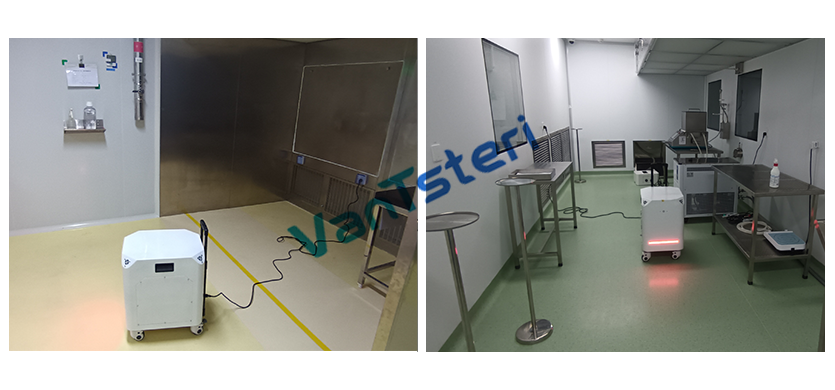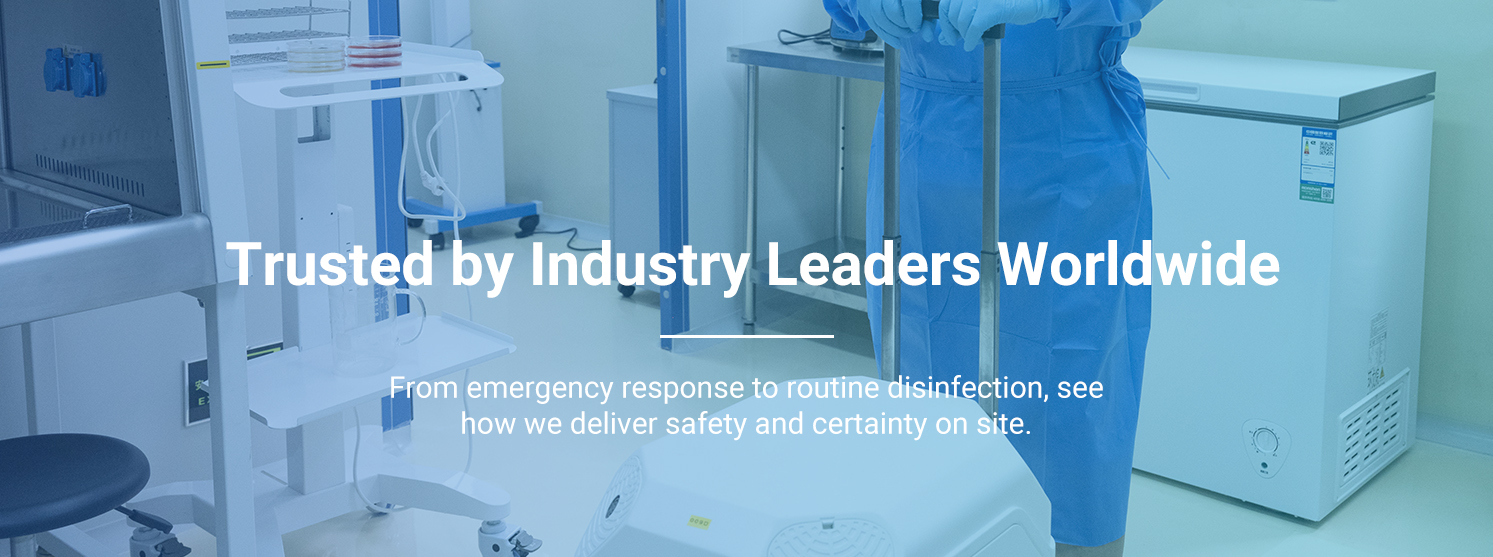Weighing and Sampling Room Decontamination
- Addtime: 2025-08-13 / View: 92
Fantong engineers were invited to a pharmaceutical factory. The manager anxiously led the engineers to the warehouse sampling workshop. Upon entering, they were greeted by a spectacular modern high-rise warehouse, with towering shelves, neatly stacked goods, and clearly labeled items. Automated guided vehicles (AGVs) shuttled back and forth, computer-controlled, fully automated storage of materials. Through a dedicated passage, they arrived at the “weighing and sampling room.” The warehouse manager informed them that the quality inspection department had recently discovered suspicious bacteria in routine environmental sampling and also in raw material samples. Genetic sequencing confirmed the presence of the same strain. If this issue isn’t addressed, production will be halted. During peak sales season, the company faces significant losses. The workshop, approximately 50 square meters, features pedestrian and logistics access and two weighing and sampling rooms.
—Problem Analysis—
A weighing and sampling room is a specialized laboratory used for sampling, weighing, and analysis. It prevents dust and dirt from spreading outside the work area, ensuring that operators do not inhale the items they are handling. It is a specialized purification device for controlling airborne dust. Indoor air passes through a primary filter and a medium-efficiency filter, then is forced into a static pressure box by a centrifugal fan. It then passes through a high-efficiency filter and is blown out from the outlet of the air diffusion and supply unit. Clean air flows through the work area at a uniform cross-sectional velocity, creating a localized high-cleanliness level. The operating area of the weighing and sampling room is maintained at a negative pressure, with 10% of the recirculated air exhausted. Air in the central weighing chamber is self-circulated through a three-stage filtration system (high-efficiency filters remove 99.99% of particles ≥0.3μm).
The key to the problem lies in the weighing hood and air conditioning system. The weighing hood is a critical component of the weighing room: this device weighs multiple materials, which can easily cause cross-contamination. Timely cleaning of the weighing room’s air duct filtration system is a crucial component of this disinfection mission. The weighing room is located within a warehouse, and contamination from the warehouse could cause cross-contamination within the weighing room. During disinfection, standard procedures are implemented for both fresh and exhaust air, and temporary installations are implemented if necessary to ensure effective disinfection.
—Treatment Plan—
1. Identify the Source of Contamination
Determine the strain type and outbreak point detected during environmental sampling, and determine whether the strain originated from the environment, personnel, or raw materials. Based on the characteristics of the strain, determine the disinfectant dosage and duration. Increase the dosage appropriately at the outbreak point, trace the strain source, and conduct testing or preventive disinfection in areas with potential contamination.
2. Special Exhaust Design
Because the sampling room is located within the warehouse, the air conditioning system’s fresh air is drawn from the warehouse, and exhaust air is also discharged within the warehouse. This design saves energy, but once contaminated, it is difficult to remove. Before disinfecting the air conditioning supply and exhaust vents, Fantong engineers connected temporary vents to the outdoors.
3. Weighing Hood
The weighing hood underwent secondary treatment. The hood was opened and its air ducts and filters were cleaned. The hood was then disinfected separately with vaporized hydrogen peroxide in situ.
4. Weighing and Sampling Room
The entire weighing and sampling room was first disinfected with vaporized hydrogen peroxide. Different disinfection protocols were developed based on the characteristics of the contaminating bacteria.
5. Air Conditioning System Disinfection
The air conditioning system was first cleaned, and then the ductwork was circulated with vaporized hydrogen peroxide disinfection.
— Conclusion—
After two disinfection cycles, the contamination issue in the sampling room was successfully resolved. The bacteria were no longer found in the environment or in the raw materials. During the second year’s maintenance season, the pharmaceutical factory followed the advice of Fantong engineers and modified the fresh air and exhaust vents in the sampling room. Fantong engineers are invited to perform comprehensive environmental disinfection of the workshop and warehouse annually.













